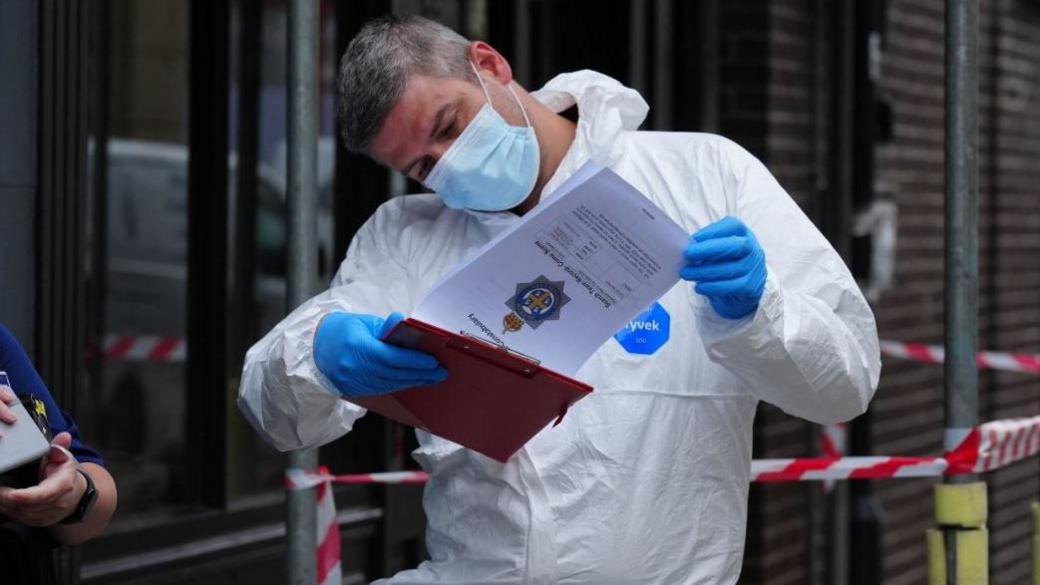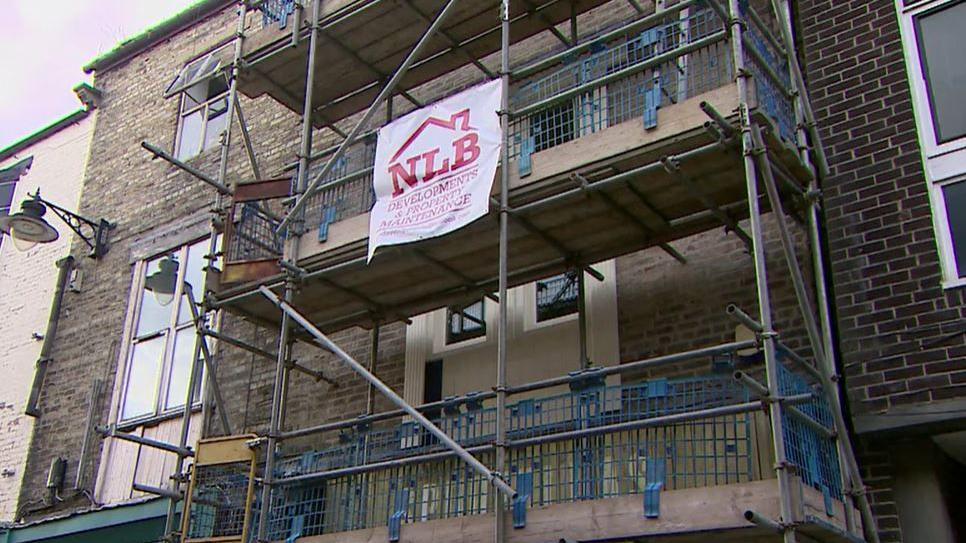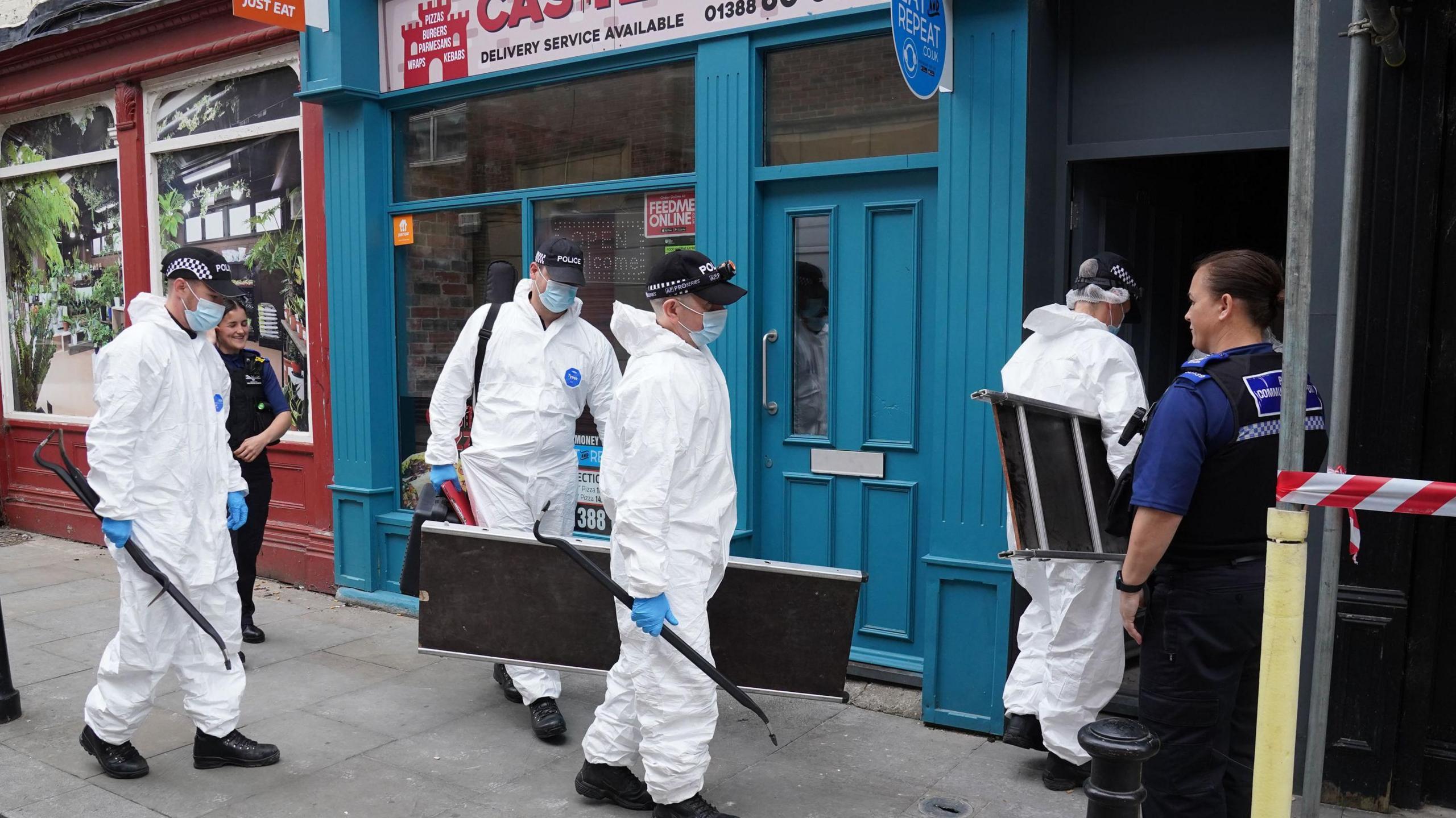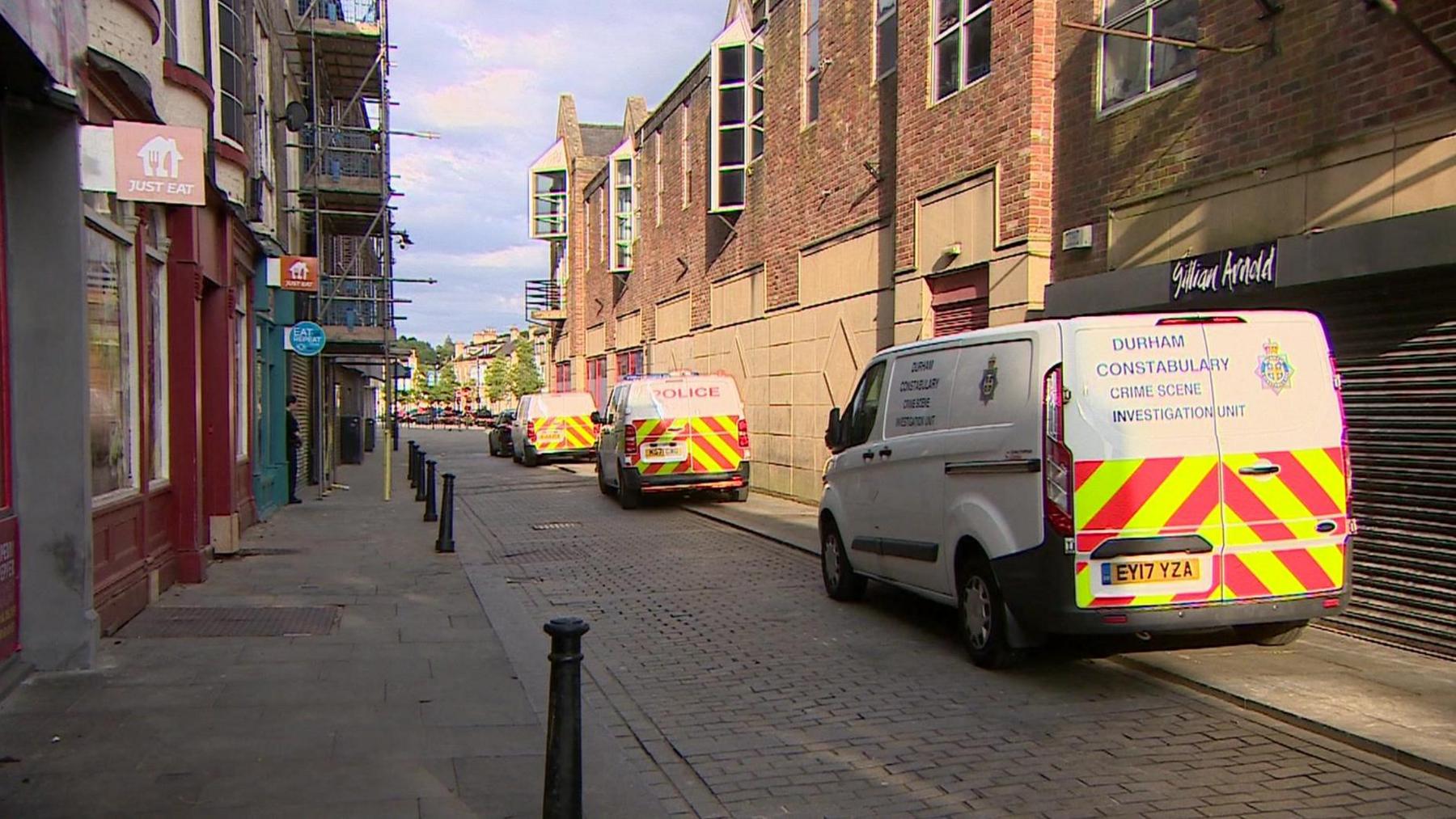Search for relatives of baby hidden a century ago

It will take at least eight weeks to determine how long ago the baby was hidden beneath floorboards
- Published
The detective trying to piece together what happened to a baby hidden beneath floorboards more than a century ago says he hopes to find living relatives.
The skeleton of the full-term child was discovered with twine around its neck at a house in Fore Bondgate, Bishop Auckland, last month.
Durham Police said the sex of the baby has yet to be determined, but its death was likely suspicious.
Det Ch Insp Mel Sutherland said he felt it was his duty to be the voice of the baby who "never got the chance to tell its story."
He said it would take at least eight weeks for radio carbon dating analysis to determine exactly how long ago the baby was concealed.

The discovery was made while the disused house was being renovated
The remains were wrapped in a newspaper and investigators were able to identify a fragment dated from 1910.
A forensic anthropologist measured the child's bones and development of its teeth and was able to determine it was full-term at 40 weeks.
Mr Sutherland said he had hoped to be able to create a digital image of what the child may have looked like, but that was not possible because of the lack of developed facial features.
He said the key to solving the mystery was to rely on science.
"Because of the length of time since the baby was concealed, we cannot rely on our usual lines of inquiry such as CCTV footage, house-to-house, witnesses and digital footprints," he added.
The next stage of the investigation is for police to trawl through records spanning the years 1900 to 1920.
Mr Sutherland said: "We are hopefully going to identify some surviving family members; long lost relatives who we can then sensitively approach."
But he warned it was also possible that no living family members would be traced.

Police are trawling through historical records
The property where the baby was found dates to the Victorian period and at one stage housed a church-run mother and baby unit.
However, it is believed the baby was concealed before the unit was set up.
"It's really important to me that that story is told and that we then give the baby a full and dignified funeral," Mr Sutherland added.
"I think we will get a good picture of who was in the house at the time, what the house was used for and identify some family members."
However, he said it was possible they would never know what happened "in the moment" the child died.
Follow BBC Tees on X (formerly Twitter), external, Facebook, external and Instagram, external. Send your story ideas to northeastandcumbria@bbc.co.uk.
Related topics
- Published6 August 2024

- Published30 July 2024
